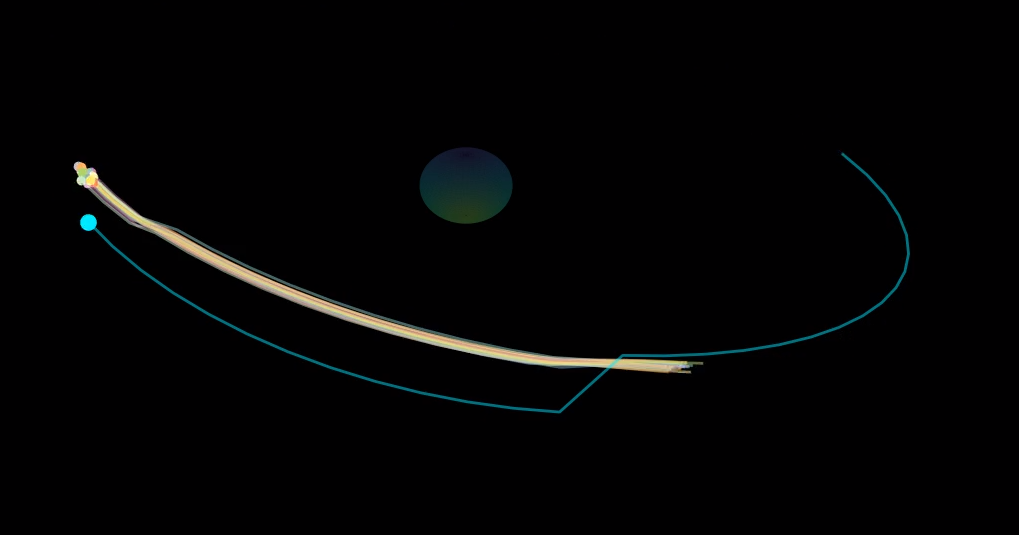Researchers behind SmartSat Project P2.11 Trusted AI Frameworks for Change and Anomaly Detection in Observed ISR have developed new visualisations to demonstrate their anomaly detection approach.
This project seeks to automate the identification of higher order patterns in ISR (Intelligence, Surveillance and Reconnaissance) sensed detections along with establishing normalcy. The intention is for significant changes from normalcy – anomalies – to be reported to operators as alerts requiring human assessment, decision, and action. In addition, the rationale of the alerts will also be computed and presented in a transparent way to instil user confidence in the results.
Visualisation of anomaly detection in satellite orbits as part of space situational awareness
This video shows a visualisation of anomaly detection in satellite orbits as part of space situational awareness. Anomalies are caused by phenomena like malfunctions, collisions and manoeuvres and are important to detect quickly. The video shows how particle filters can model the satellite’s orbit and detect when something changes.
In more detail, the larger point with a longer trace displays a simulated satellite orbit, with features exaggerated to make them perceptible visually. The trace and point change colour when the satellite manoeuvres. The smaller points and traces show the orbital state represented by each component of a particle filter, a modern tracking algorithm. These points are samples from the estimated distribution of our belief of the satellite’s orbital state, given noisy observations. When the satellite manoeuvres, there is a discrepancy between this distribution and the observations, thus signifying an anomalous observation.
 a static visualisation of anomaly detection in satellite orbits as part of space situational awareness
a static visualisation of anomaly detection in satellite orbits as part of space situational awareness
This static diagram shows in detail a further visualisation of the anomaly detection process. Anomalies are caused by phenomena like malfunctions, collisions and manoeuvres and are important to detect quickly. The diagram shows how particle filters can model the satellite’s orbit and detect when something changes.
The larger point with a longer trace displays a simulated satellite orbit, with features exaggerated to make them perceptible visually. The satellite has undergone a manoeuvre roughly midway through the displayed arc. The smaller points and traces show the orbital state represented by each component of a particle filter, a modern tracking algorithm. These points are samples from the estimated distribution of our belief of the satellite’s orbital state, given noisy observations. When the satellite manoeuvres, there is a discrepancy between this distribution and the observations, thus signifying an anomalous observation.
This project, which is a collaboration between SmartSat, the University of Adelaide and BAE Systems, is lead by Matthew Roughan from the University of Adelaide.